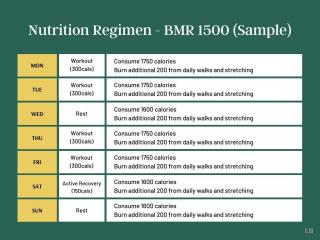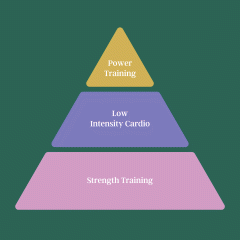In both business and life, there have always been winners and losers. Some people just seem to be able to excel in their careers while others just barely get by or, worse, flounder and struggle in a seemingly endless cycle. A popular and practical exercise to determine your strengths and weaknesses can be found in the SWOT analysis. So, what is SWOT analysis, you may ask?
In this article, we will discuss not only what is SWOT analysis but also how to perform one on your own and use it as a competitive workplace advantage.
What Is SWOT Analysis?
A SWOT analysis is an extremely useful tool for both businesses and individuals. SWOT stands for Strengths, Weaknesses, Opportunity, and Threat.
The purpose of a personal SWOT analysis is to evaluate the past, present, and future of your personal or professional goals. If you do it properly, it will enable you to leverage your strengths, improve your weaknesses, mitigate threats, and identify opportunities for future growth.
Doing a SWOT analysis provides a “snapshot” of your current situation and helps you evaluate and develop a strategy for career or life advancement. You need to have a clear idea of your goals before that, though. If you need help with figuring out or setting goals, you can find it here: How to Set Long Term Goals and Reach Success
The Breakdown
As mentioned above, SWOT analysis is broken down into strengths, weaknesses, opportunities, and threats. When you imagine what is SWOT analysis like a grid, the top half that contains your strengths and weaknesses are the internal factors, so we have a high degree of control over them. Meanwhile, the bottom half holds opportunities and threats, which are the external factors that we have limited or no control over.
Likewise, the grid can be broken down into the left and right sides. The left side with strengths and opportunities are generally helpful things that you can use to achieve your goals. The right side contains weaknesses and threats — the roadblocks to your development.
Unlike the strengths and weaknesses sections, the opportunity/threat section is external. This makes it much easier to get information and evaluate it objectively.
Opportunities are defined as external factors that are favorable to the goals you have set for the SWOT analysis. Threats, on the other hand, can have a negative effect on your goals.
Good places to research opportunities and threats include:
Industry publications Trade shows and conventions Personal contacts within the industry Industry chat rooms and groups on the internetFilling Out Your SWOT Analysis Grid
Once you have a clear idea about your “why” (the goal for doing the SWOT analysis), it is time to start filling in the grid.
This is where a lot of people get into trouble. Sure, the quadrants of the grid are labeled, but as any writer can tell you, crafting the first sentence is always the hardest.
Below are some common questions that can help you with that.
Identifying Personal Strengths
What natural talents or abilities do I have? What type of specialized knowledge or skills have I developed over the years? What skills or personality traits have made me successful in the past? What formal education or training have I had? What do others see as my strengths? Is there a common theme among their answers?Identifying Personal Weaknesses
In what areas do you know you need improvement? What are the areas that you struggle with? What things do you avoid if possible? What do you see as personal roadblocks to your success? What areas of your life don’t you feel confident in?Identifying Opportunities
How is the industry doing? Is it growing and expanding or taking a nosedive? What does the job market look like for your dream job? What does the larger (macro) economy look like? Is business booming in the local region, nationally, or globally? Are there any external factors (e.g., low unemployment rate and lack of qualified employees) that you can exploit? What market trends can you identify as positive factors? Who are your contacts within the industry that may help you fulfill your dreams?Identifying Threats
What obstacles are preventing you from achieving your goals, education, experience, or training? Are there negative market trends that can affect your journey? Is the industry changing or becoming uncertain? How do you stack up against the competition for a specific promotion or job? Can you identify the biggest threat to your success?How to Analyze a Personal SWOT Analysis
Now that you have completed the analysis, it’s time to analyze the results. After that, you may develop a plan and take the required action to achieve your goals.
There are basically two methods for analyzing the results of a SWOT analysis: matching and converting. Because there is no right or wrong way to do it, you can simply choose what you think will be most helpful for your situation.
Matching
Matching involves comparing your strengths to opportunities and weaknesses to threats.
By combining your strengths and opportunities, you can identify your strongest suits. Then, you may take aggressive action where your strengths and opportunities overlap. For instance, if your skills and education put you above the work competition, you are in a much better position to negotiate salary and perks with the hiring manager.
Learn more about personal strengths in this guide: How to Identify and Leverage Your Personal Strengths
In contrast, matching your weaknesses to threats will tell you which areas to minimize or avoid altogether. Say, you may have identified a weakness as a lack of formal training in the field you are interested in. If you combine that with an industry that experiences a cyclical downturn, you may want to postpone any plans until the timing is better.
Converting
Converting merely refers to the process of transforming weaknesses into strengths and threats into opportunities. Here is an interesting article about that: Why the More Threats We Fight Every Day, the More Successful We Become
While it sounds simple enough in theory, it can be more difficult in practice.
Let’s say that you have identified creativity as a weakness. You think that you are not as creative as the next person.
How can you turn that weakness into a strength?
Well, it turns out that creativity is a skill that can be learned. There are various exercises and techniques you can use to become more creative.
The downside to using the converting method is that it takes time and effort to change weakness into a strength. If you have both the time and energy to do so, it is an excellent way to use the SWOT analysis.
Things to Remember When Doing a SWOT Analysis
1. Know Your Goals
A SWOT analysis is also an especially useful tool for business owners looking to get or expand a competitive advantage over the competition. It is important to know WHY you are doing a SWOT analysis.
What exactly do you want to get out of it? Are you looking for a promotion, new job, career change, or just personal growth?
As Carl Pullein explains in his widely read blog:
“It starts with a vision and a question. What do you want to accomplish? You need to know precisely what it is you want. Without a clear vision of what you want to achieve, you will drift through life. And it is here where most people fail.”
2. Be Honest
When performing a SWOT analysis, honesty is a must.
However, it is notoriously difficult for us to analyze ourselves accurately, so we often overestimate our strengths and underestimate our weaknesses. According to the American Psychological Association:
“In a subjective area like intelligence, for example, people tend to perceive their competence in self-serving ways. A student talented in math, for instance, may emphasize math and analytical skills in her definition of intelligence, while a student gifted in other areas might highlight verbal ability or creativity. Another problem is that in many areas of life, accurate feedback is rare. People do not like giving negative feedback, so it’s likely we will fail to hear criticism that would help us improve our performance.”
Tip:
Don’t be afraid to tap friends, family, and colleagues to comment about your strengths and weaknesses. Even if not all feedback will be spot-on, you should be able to get a consensus of how others perceive you
Just keep in mind that while the SWOT analysis tool can be immensely powerful, it’s only as good as the information you put into it.
3. Prioritize Goals
One of the most common mistakes when doing a SWOT analysis is listing too many things in each category. It usually happens when the goal is unclear or the scope is too broadly defined. Remember: you are trying to find the most dominant elements for each quarter of the grid.
Once you have established your goals, you only need to specify three to seven points for each section.
4. Don’t Overestimate Strengths
There are three characteristics all successful people share.
They realize that everything is a competition in business. Companies compete for customers, laborers compete for jobs, and employees compete for positions and promotions. They have a clear and honest understanding of their own strengths and weaknesses. They leverage their strengths and mitigate or improve weaknesses in order to maximize their opportunities for growth.Despite that, overestimating your strengths can cause problems later when you try to implement changes based on the SWOT analysis results.
For example, you may be an SEO expert for your company or personal website. However, to leverage that knowledge into a promotion or new job, you need to compete with people who have more experiences or education attainments in the field. Thus, instead of claiming that it is your strength, it should go under the opportunity category, considering you still need to enhance your SEO skills through academic or practical experience.
Tip: Try to think of both your strengths and weaknesses like how you compare to others with similar goals.
5. Be Specific
Being vague and using broad generalizations makes it challenging to come up with an actionable plan.
For example, folks commonly say that their strength is working well with others or being a people person. While no one may argue about that, it is still too vague and hard to quantify to become anyone’s strength.
For a more specific and actionable characteristic, you may say that you have the ability to manage teams well through leadership and delegation or follow rules and take direction from your superiors.
By doing so, you may be able to get the most suitable job based on your skillset.
Tip: Add quantitative values to the equation whenever possible.
6. Accept Your Weaknesses
No one likes to admit their weaknesses, although underestimating them can be a problem.
As said above, doing a SWOT analysis requires accurate and honest evaluations before it can be of any use at all.
There is an old saying in computer programming: Garbage In, Garbage Out (GIGO). It entails that the quality of the result is directly related to the quality of the information you start with.
Tip: Ask friends and colleagues for their opinions and try not to get hurt in the process. Assure them that you value honesty and that you will not hold anything against them.
To Sum Things Up
People used to say that there are only two certainties in life: death and taxes. I would add one more to that list, and that’s change.
Change is going to happen to us despite our best efforts. It’s how we deal with the change that matters.
Personal development is a self-driven choice we make.
While we can control this, there are many times in life when a personal change is imposed on us by external factors. When it helps us to recognize, understand, and react in order to “make the best of a bad situation,” though, that’s when a skill comes into play.
Done right, you will be able to analyze your current position and brainstorm possible directions for your life or career while highlighting possible opportunities and threats.
The more realistic and honest you can be, the more useful your SWOT analysis results will be.
More on Using SWOT Analysis to Your Advantage
Featured photo credit: JESHOOTS.COM via unsplash.com





























































